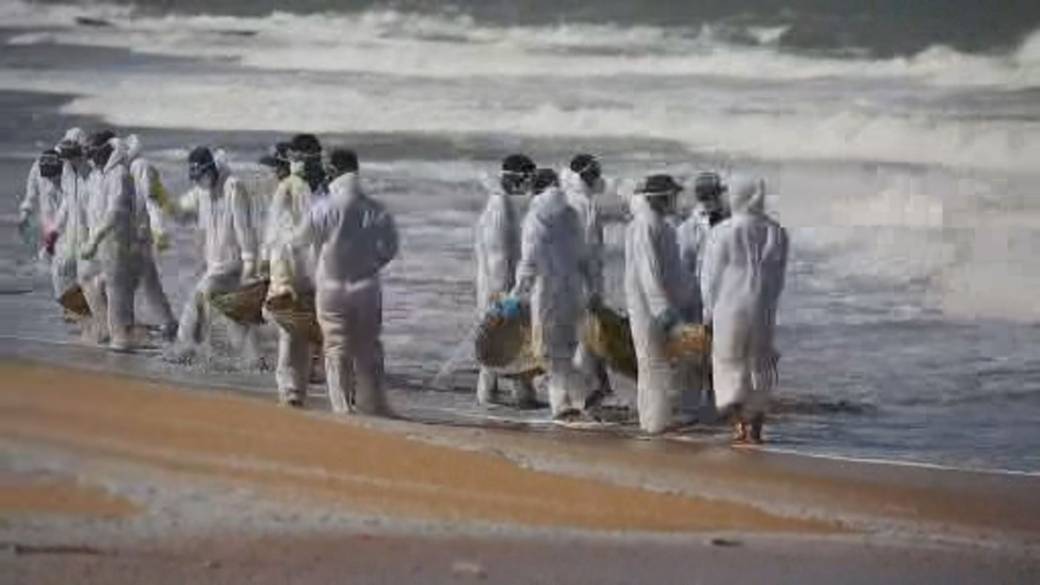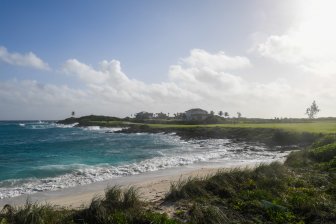Sri Lanka’s prime minister resigned on Monday after weeks of protests demanding that he and his brother, the country’s president, step down for dragging the nation into its worst economic crisis in decades.
Prime Minister Mahinda Rajapaksa said on Twitter that he tendered his resignation to President Gotabaya Rajapaksa, a move that followed a violent attack by government supporters on protesters, prompting authorities to deploy armed troops in the capital Colombo.
Read more:
Sri Lanka declares curfew and state of emergency after protests over economic crisis
Four people, including a ruling party lawmaker, were killed in Monday’s violence, police spokesman Nihal Thalduwa told the Associated Press. President Rajapaksa imposed a nationwide curfew from Monday night to Wednesday morning.
For more than a month, the protests have spread across the country, drawing people of all ethnicities, religions and classes. For the first time, middle-class Sri Lankans also took to the streets in large numbers, marking a dramatic revolt by many former Rajapaksa supporters, some of whom have spent weeks protesting outside the president’s office.
The protests highlighted a dramatic fall from grace of the Rajapaksas, Sri Lanka’s most powerful political dynasty for decades. The brothers were once hailed as heroes by many of the island’s Sinhalese-Buddhist majority for ending the country’s 30-year civil war, and despite accusations of war atrocities, they were firmly entrenched at the top. of Sri Lankan politics so far.
A Sri Lankan government supporter carries a national flag after attacking the anti-government protest site outside the president’s office in Colombo, Sri Lanka, Monday, May 9, 2022.
AP Photo/Eranga Jayawardena
The prime minister’s resignation comes as the country’s economy has rapidly unraveled in recent weeks. Imports of everything from milk to fuel have plummeted, leading to severe food shortages and ongoing power outages. People have been forced to queue for hours to buy essential items. Doctors have warned of crippling shortages of life-saving drugs in hospitals, and the government has suspended payments on $7 billion in foreign debt due this year alone.
President Gotabaya Rajapaksa initially blamed Sri Lanka’s economic woes on global factors such as the pandemic hitting its tourism industry and the conflict between Russia and Ukraine driving up world oil prices. But both he and his brother have since admitted mistakes that exacerbated the crisis, including admitting that they should have sought a bailout from the International Monetary Fund sooner.
Sri Lanka has been holding talks with the IMF to establish a rescue plan, but its progress depends on debt restructuring negotiations with creditors. Any long-term plan would take at least six months to get underway.
Sri Lanka was in financial trouble even before the Ukraine war pushed up food and oil prices and made things worse.
The Sri Lankan government has run large budget deficits after cutting taxes in 2019 and has struggled to collect taxes during the COVID-19 pandemic. It has also racked up massive foreign debt, much of it owed to China, and has scant foreign reserves to pay for imports and defend its troubled currency, the rupee.
Sri Lanka tops a list compiled by Liliana Rojas-Suárez of the Center for Global Development that ranks the countries most exposed to financial shocks. The most vulnerable are dependent on commodity imports and have low foreign exchange reserves compared to what they owe to other countries.
Sri Lankan government supporters attempt to attack anti-government protesters outside the president’s office residence in Colombo, Sri Lanka, Monday, May 9, 2022.
AP Photo/Eranga Jayawardena
Monday’s violence sparked widespread anger, with people singling out Rajapaksa supporters and attacking them in many parts of the country.
Ruling party lawmaker Amarakeerthi Athukorale and his bodyguard were killed in Nittambuwa, some 30 kilometers (20 miles) north of Colombo, after the car they were traveling in was intercepted by an angry crowd, the police spokesman said. .
Athikorale or his bodyguard had shot at the protesters, who chased them down and trapped them inside a building where police recovered their battered bodies several hours later, the spokesman said.
Three people were hospitalized with gunshot wounds from the shots fired from the lawmaker’s vehicle, he said.
Read more:
Sri Lanka rushes to avert environmental disaster after chemical container ship sinks
Separately, in the Rajapaksa’s hometown of Weeraketiya, a mob that tried to burn down a local politician’s house was shot at, killing two protesters, he said.
Protesters tried multiple times to storm the prime minister’s official residence on Monday night, forcing police to fire tear gas. The houses of government ministers and politicians who supported the Rajapaksas were also attacked and some burned down. The monument to the brothers’ parents was vandalized.
Jayadeva Uyangoda, a political scientist from Colombo, said the prime minister’s resignation marked a new chapter in the country’s political crisis. “The prime minister had to resign in disgrace after his supporters unleashed such violence,” she said.
He added that it would be difficult for President Gotabaya Rajapaksa to maintain credibility after Monday’s violence.
But the president has so far refused to resign and Parliament must go through a difficult process if it tries to remove him. The resignation of the prime minister meant the dissolution of the entire cabinet.

Earlier on Monday, supporters of the prime minister attacked protesters who had been demonstrating outside the prime minister’s official residence for weeks, beating them with wooden and iron poles. They then marched to the president’s office, where they attacked protesters and set fire to their camps.
Police fired tear gas and a water cannon, but not with enough force to control the mob. The attack came despite a state of emergency declared by the president on Friday that gave him sweeping riot control powers.
Hundreds of armed soldiers were deployed in the capital as protesters accused police of failing to prevent the attack, despite the use of tear gas and water cannons on protesters on Friday.
“The police did not protect us, therefore we have taken it into our own hands,” said Druvi Jinasena, who was helping to block roads to protect the protest site.
An official at Colombo’s main hospital said 173 people were treated, most for minor injuries, although 15 were seriously injured. The official spoke on condition of anonymity because she was not authorized to speak to the media.
The country’s foreign reserves have plummeted below $50 million and it owes nearly $25 billion in foreign debt due in 2026. Its total foreign debt is $51 billion.
Meanwhile, popular anger against the Rajapaksa clan has only grown, increasing pressure on President Gotabaya Rajapaksa to resign as well.
“There has been sustained pressure over the past few weeks for the president to step down, but he hasn’t paid much attention to that,” said Bhavani Fonseka, a senior fellow at the Colombo-based Center for Political Alternatives.
“People are angry, and that anger is not going to go away any time soon.”
Pathi reported from New Delhi. AP economics writer Paul Wiseman in Washington contributed to this report.
© 2022 The Canadian Press
Reference-globalnews.ca

